
WEBSep 1, 2015 · Blast furnace slag is a byproduct of the manufacture of pig iron from iron ore, limestone and coke. It has been used as a secondary cementing material for more than 100 years (Bellmann and Stark, 2009). For above reason, slag is considered to be used for the solidifiion of COPR as an alternative material for cement.
WhatsApp: +86 18203695377
WEBJan 1, 2015 · Sintering is the most economic and widely used agglomeration process to prepare iron ore fines for blast furnace use. In this chapter, the sintering process is first described and the key steps of the sintering process, namely, granulation and thermal densifiion, are identified. Discussion is then focused on the effect of the chemical ...
WhatsApp: +86 18203695377
WEBJan 1, 2015 · In a DR process, iron ore pellets and/or lump iron ores are reduced by a reducing gas to produce DRI or hot briquetted iron (HBI). Depending on the generation of the reducing gas, two different DR processes are commercially available: gasbased and coal/oilbased. ... Iron Ore Pellets for Blast Furnace Feedstocks—Determination of the .
WhatsApp: +86 18203695377
WEBJan 31, 2024 · The country's largest steelmaker will put the funds towards a billion upgrade of an old blast furnace at the NSW plant, which uses coal and iron ore to make steel in the same way it has ...
WhatsApp: +86 18203695377
WEBThe burden charging operation in blast furnace is one of the most important operations during ironmaking process. In this paper, we focus on the study of precise burden charging operation, which involves two aspects: How to obtain and form the optimal burden surface shape. For the first problem, we construct a mapping model between the burden .
WhatsApp: +86 18203695377
WEBJan 1, 2022 · The integrated iron and steelmaking route involves blast furnace (BF) ironmaking followed by basic oxygen furnace (BOF) steelmaking. The BF uses sinter, pellets, and lump ore as ironbearing raw materials, and coke and pulverized coal as fuel and reducing agents to produce hot metal with consistent quality for the BOF process.
WhatsApp: +86 18203695377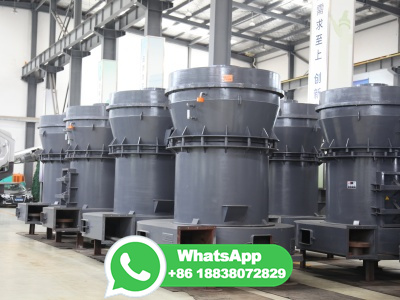
WEBAs the mixture of iron ore, coke and limestone heats, the hot waste gases are collected and cleansed. They are then used to help heat the air blast, required if blast furnace is to reach the high temperatures needed to produce molten iron. The stock level is constantly 'topped up'. Molten iron ore is 'tapped' at the bottom of the blast ...
WhatsApp: +86 18203695377
WEBJun 15, 2023 · Ironmaking blast furnace is vertical smelting furnace for continuous smelting of pig iron with iron ore as raw material, also called ironsmelting furnace or blast furnace. It is the main equipment for smelting pig iron (Fig. 1) and can also be used to produce lead, copper, and other metals. Its working process is as follows: furnace .
WhatsApp: +86 18203695377
WEBApr 8, 2016 · Blast furnaces are countercurrent chemical reactors, widely utilized in the ironmaking industry. Hot reduction gases injected from lower regions of the furnace ascend, reacting with the descending burden. Through this reaction process, iron ore is reduced into liquid iron that is tapped from the furnace hearth. Due to the extremely .
WhatsApp: +86 18203695377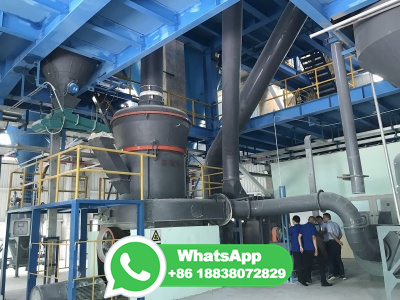
WEBAug 19, 2020 · Hopewell Furnace made castings and pig iron from . An ancient alchemy sustained Hopewell Furnace: transforming mineral into metal. Since 4,000 years ago, when humans learned how to free iron from ore, the basic process has not changed. Iron oxide is heated in an intense flame fed by carbon fuel. Oxygen in the ore combines .
WhatsApp: +86 18203695377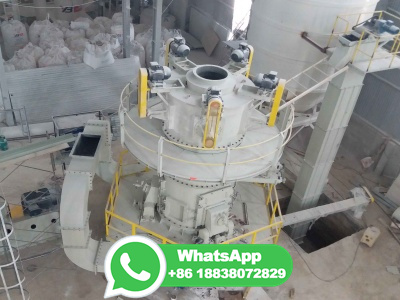
WEBFeb 23, 2023 · The input requirements for 16th century blast furnaces were large. Though fuel consumption had fallen to roughly the level of the bloomery furnace (initially it used much more fuel than a bloomery), producing a ton of pig iron still required roughly tons of charcoal, and tons of iron ore.
WhatsApp: +86 18203695377
WEBJun 30, 2023 · The production of iron from its ore involves an oxidationreduction reaction carried out in a blast furnace. Iron ore is usually a mixture of iron and vast quantities of impurities such as sand and clay referred to as gangue. The iron found in iron ores are found in the form of iron oxides. As a result of these impurities, iron must be first ...
WhatsApp: +86 18203695377
WEBDec 1, 2023 · The purpose of the blast furnace is to separate iron ore extracted from the ground into its component parts: iron and oxygen. A form of carbon, normally coal, combines with the oxygen in the iron ore.
WhatsApp: +86 18203695377
WEBTypical appliions in iron ore processing as well as in sinter production are discussed with practical examples. ... Sintering is the most economic and widely used agglomeration process to prepare iron ore fines for blast furnace use. In this chapter, the sintering process is first described to identify the key steps of the process, that is ...
WhatsApp: +86 18203695377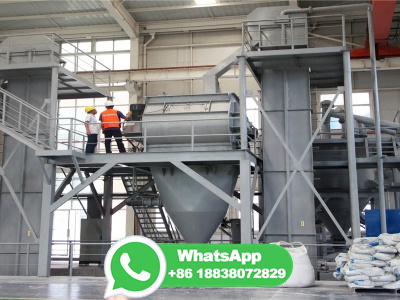
WEBOct 8, 2017 · Tennessee's nineteenthcentury iron industry was loed along the Western Highland Rim. Throughout the nineteenth century and well into the twentieth, a large part of this upland portion of the Tennessee River Valley, from Stewart to Deur Counties, produced a highquality brown iron ore from which special grades of pig iron, such as .
WhatsApp: +86 18203695377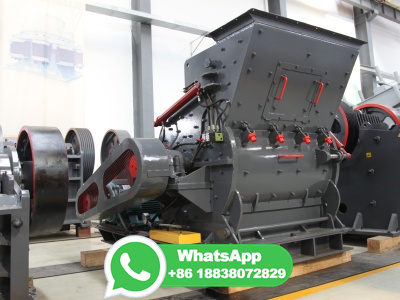
WEBThe term blast furnace comes from the blast of hot air that is blown into the lower part of the furnace at between 1400º to 2100ºF. Molten iron is produced in a blast furnace by the following steps: 1. Charge (solid iron ore, coke, and limestone) is constantly dumped into the top of the furnace. 2.
WhatsApp: +86 18203695377
WEBThe metal Hot metal (blastfurnace iron)Most blast furnaces are linked to a basic oxygen steel plant, for which the hot metal typically contains 4 to percent carbon, to percent silicon, percent sulfur, to percent manganese, and percent temperatures are in the range 1,400° to 1,500° C (2,550° to 2,700° .
WhatsApp: +86 18203695377
WEBWith moderate attention, you can produce between 5,700 and 6,000 iron bars in an hour. That means the profit margin falls between 31,215 and 41,415 hourly. First make sure you are on either world 358 or 386 (the official Blast Furnace worlds). After purchasing the raw materials, deposit 72,000 coins into the coffer.
WhatsApp: +86 18203695377
WEBMay 14, 2020 · The binder is an important additive widely applied in pelletizing iron ore concentrates, making iron ore pellets available as feedstocks for blast furnace ironmaking or direct reduction processes ...
WhatsApp: +86 18203695377
WEBSep 1, 2016 · % Zn max and up to % Cu are allowed in ironore part of the blast furnace burden for the production of standard conversion pig iron. Slagforming components are divided into basic oxides (Ca ...
WhatsApp: +86 18203695377
WEBIron is extracted from iron ore close ore A rock containing enough quantities of a mineral for extraction to be possible. in a huge container called a blast furnace. Iron ores such as haematite ...
WhatsApp: +86 18203695377
WEBNov 22, 2017 · Primary iron production is still predominantly made by the blast furnace process. However, there are disadvantages inherent to the blast furnace process such as: 1) dependence on highquality ...
WhatsApp: +86 18203695377
WEBThe HIsarna ironmaking process is a direct reduced iron process for iron making in which iron ore is processed almost directly into liquid iron ().The process combines two process units, the Cyclone Converter Furnace (CCF) for ore melting and prereduction and a Smelting Reduction Vessel (SRV) where the final reduction stage to liquid iron takes .
WhatsApp: +86 18203695377
WEBThe purpose of a Blast Furnace is to reduce the concentrated ore chemically to its liquid metal state. A blast furnace is a gigantic, steel stack lined with refractory brick where the concentrated iron ore, coke, and limestone are dumped from the top, and a blast of hot air is blown into the bottom. All the three ingredients are crushed into ...
WhatsApp: +86 18203695377
WEBDec 1, 2016 · The reduction of iron ore proceeds via the successive steps Fe 2 O 3 → Fe 3 O 4 → FeO → Fe in blast furnace. This paper is based on the framework of the blast furnace numerical model developed previously [11], [14].The focus of the present study is to implement the grain model into the blast furnace model and compare with the URC .
WhatsApp: +86 18203695377
WEBJan 10, 2016 · The metallic iron content of these ores ranges from approximately 30 % in the bog ores to 72 % in some hematites. All iron ores are mixed with other compounds in the earth which are undesirable in the smelting process. Beginning in the 1700s, iron ore was roasted with charcoal in open pits or enclosed kilns.
WhatsApp: +86 18203695377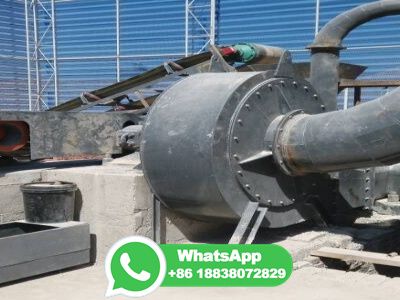
WEBMar 23, 2020 · The use of a BF is considered the popular reduction process for iron ore, worldwide [8]. The blast furnace is a plant used for iron ore reduction by charging iron ore with metallurgical coke ...
WhatsApp: +86 18203695377
WEBMay 21, 2020 · Iron ore pellets are largely characterized by inherent physical and chemical properties of the ore. Alumina and silica play important roles in determining the productivity of a Blast Furnace. On average, one percent increase in iron content improves productivity by 2% and reduces coke consumption by 1%. Therefore higher iron ore feed content to .
WhatsApp: +86 18203695377
WEBAug 25, 2022 · The average compound growth rate for basic oxygen furnace (BOF) technology in Southeast Asia was 32% over, Seaisi said. It forecasts a 25% rate over . But for electricarc furnace (EAF) technology, the growth rate was 5% over, and is expected to be 1% from . "As a result, there will be a .
WhatsApp: +86 18203695377
WEBThe blast furnace uses coke, iron ore and limestone to produce pig iron. Coal traditionally has been a key part of the cokemaking process. The coal is crushed and ground into a powder and then charged into an oven where it is heated to approximately 1800°F in the absence of oxygen. As the oven is heated, the coal begins to melt so most of the ...
WhatsApp: +86 18203695377
WEBFigure (PageIndex{3}): A Blast Furnace for Converting Iron Oxides to Iron Metal. (a) The furnace is charged with alternating layers of iron ore (largely Fe 2 O 3) and a mixture of coke (C) and limestone (CaCO 3). Blasting hot air into the mixture from the bottom causes it to ignite, producing CO and raising the temperature of the lower part ...
WhatsApp: +86 18203695377